The world is moving towards a more sustainable future, emphasising the importance of businesses incorporating eco-friendly practices and features in their working environments.
Greener businesses contribute to a healthier planet while cutting costs and improving employees’ quality of life. Additionally, going more sustainable widens a company’s audience, attracting environmentally-conscious clients.
So, how can you design an office space that is eco-friendly but still aligns with your business needs and values?
In this blog, we explore some green practices you can implement in your office and the benefits of doing so.
1. Sustainable Furniture
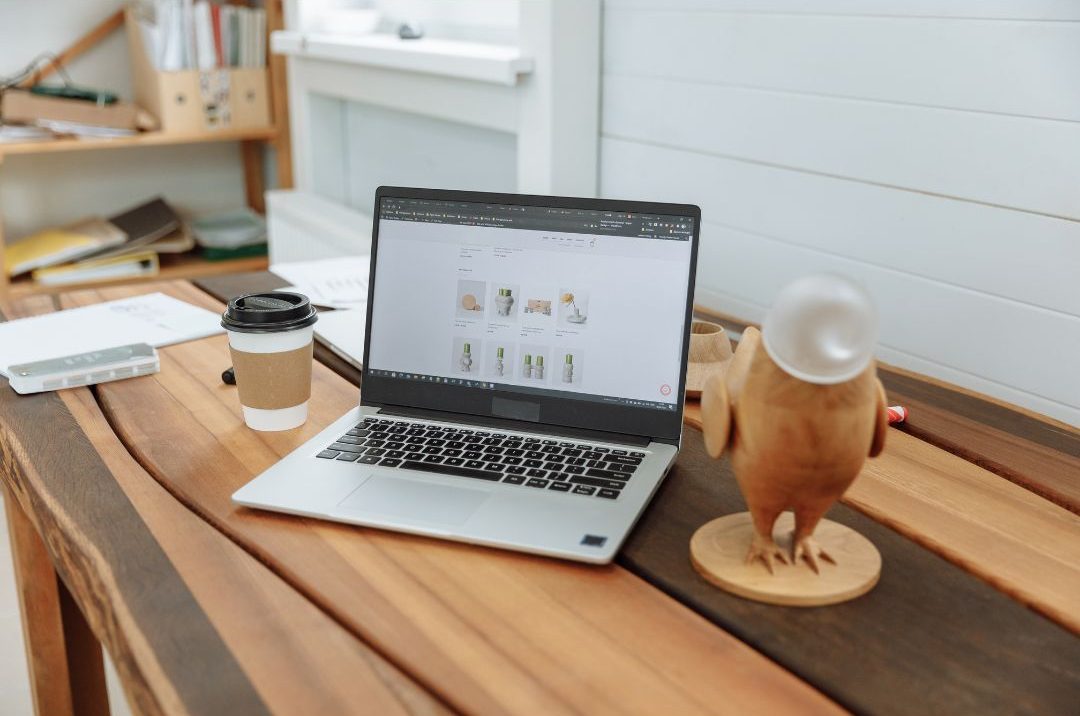
When purchasing furniture for your office, ensure you understand the finishes and fabrics used to create the pieces.
Opt for furniture made from sustainable and renewable materials, such as bamboo, reclaimed wood, or recycled products. This has benefits for both the environment and the workplace.
For example, bamboo is a fast-growing plant that requires minimal resources to grow and harvest, making it highly sustainable.
Also, reclaimed wood and recycled materials help minimise deforestation.
In the office, sustainable furniture contributes to improved air quality for your employees, unlike traditional furniture, which may contain synthetic materials that release harmful volatile organic compounds (VOCs). These contribute to poor air quality and potential health issues.
Additionally, furniture made from recycled or sustainable materials brings a unique aesthetic appeal to an office. Bamboo, for example, has a distinctive grain pattern, creating a more natural and contemporary space. On the other hand, reclaimed wood can bring history and character to a room.
2. Finishes and Textures

By choosing sustainable finishes and textures, you can reduce environmental impact, improve indoor air quality, and promote a healthier workspace. Here’s how finishes and textures can contribute to a more eco-friendly office:
Material Selection: Choose materials that have a lower environmental footprint. Opt for natural, renewable, and recycled materials such as reclaimed wood, bamboo, cork, or recycled metal and glass. Avoid materials that involve heavy resource consumption or toxic production processes.
Low VOC Finishes: Volatile Organic Compounds (VOCs) are harmful chemicals often found in paints, adhesives, and sealants. Select paints, coatings, and adhesives with low or no VOCs to improve indoor air quality and reduce the emission of pollutants.
Recyclable and Reusable Materials: Opt for finishes and textures that are easily recyclable or reusable at the end of their life cycle. This reduces waste and conserves resources. For example, modular carpet tiles can be replaced individually, minimizing waste.
Durability and Longevity: Choose materials that are durable and can withstand wear and tear over time. Longer-lasting finishes and textures mean less frequent replacements, reducing the need for new materials and the associated environmental impact.
Local and Sustainable Sourcing: Source materials locally to reduce transportation-related emissions and support local economies. Additionally, prioritize materials with certifications like FSC (Forest Stewardship Council) for wood products or Cradle to Cradle for overall sustainability
Upcycled and Repurposed Materials: Get creative by repurposing or upcycling existing materials. For instance, old wooden pallets can be transformed into furniture, reducing the demand for new resources.
3. Reduce, Reuse, Recycle
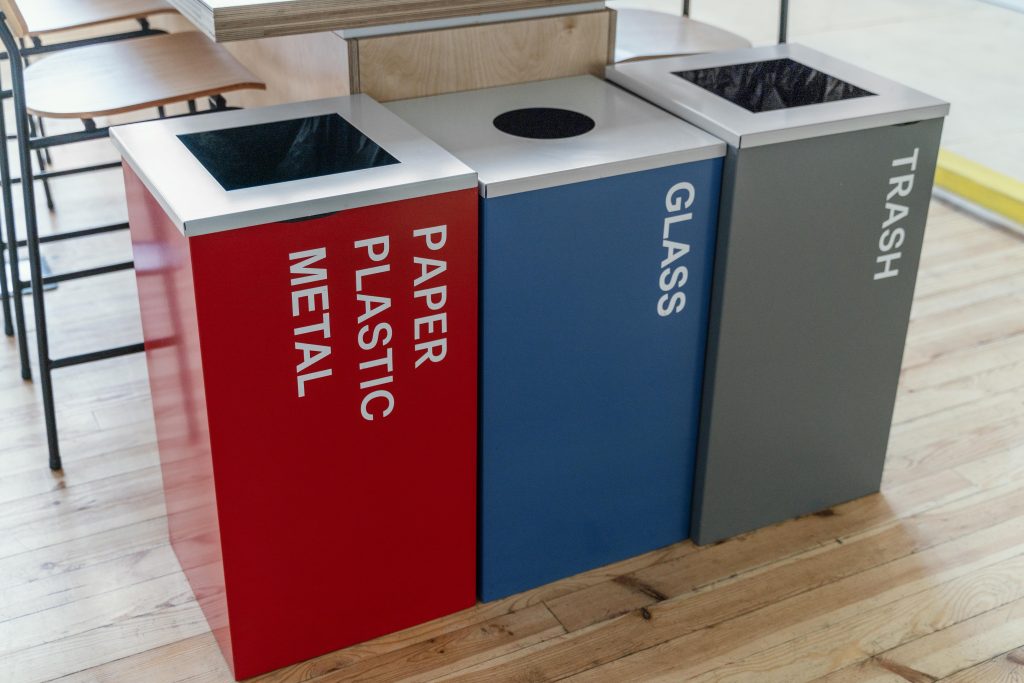
If you want to keep up with your competitors, go paperless. Many businesses have already transitioned to digital management systems for many reasons.
Firstly, going paperless leads to increased efficiency and productivity. You can easily organise, index, and search digital documents, saving your employees valuable time.
Also, digital systems enable staff to share documents, promoting seamless collaboration among team members.
Another benefit of businesses going paperless is that it cuts down on costs.
You will no longer need to purchase paper, ink, or other products associated with the more traditional method of storing information. You can also remove filing cabinets from your office, equaling extra space for your employees.
Cloud-based storage solutions provide further advantages for your business. Storing documents in the cloud minimises the risk of files getting physically damaged or lost due to data being secured and backed up.
Furthermore, cloud storage enables your business easy access to documents from any location that has an internet connection, supporting remote work flexibility and enhancing collaboration.
Implementing a comprehensive recycling program is an easy way to start your eco-friendly office.
Provide designated recycling bins for various waste types to ensure proper rubbish separation and improve recycling efficiency.
Incorporate clear signage and effectively communicate with your team about the program, helping them understand how to dispose of recyclables correctly.
By taking these steps, your business can create a sustainable workplace encouraging employee engagement and participation.
4. Maximise Natural Light

Whenever possible, use natural lighting within your workplace. Maximising natural light in your office space has several benefits.
Open floor plans, glass partitions, and strategic window placement optimise light distribution, creating a bright and inviting atmosphere.
Natural light positively impacts employee well-being and productivity. It enhances mood, reduces stress, and improves concentration. Additionally, exposure to natural light helps regulate the body’s circadian rhythm, promoting better sleep patterns and overall health.
You can easily control the amount of sunlight that enters the workplace, reducing glare and enhancing employee comfort by adjusting the blinds or curtains.
Invest in light-coloured or reflective surfaces, such as white furniture and mirrors, and ensure you paint walls in a light colour, amplifying natural light. This reduces the need for artificial lighting, saving your business energy costs.
5. Add Plants
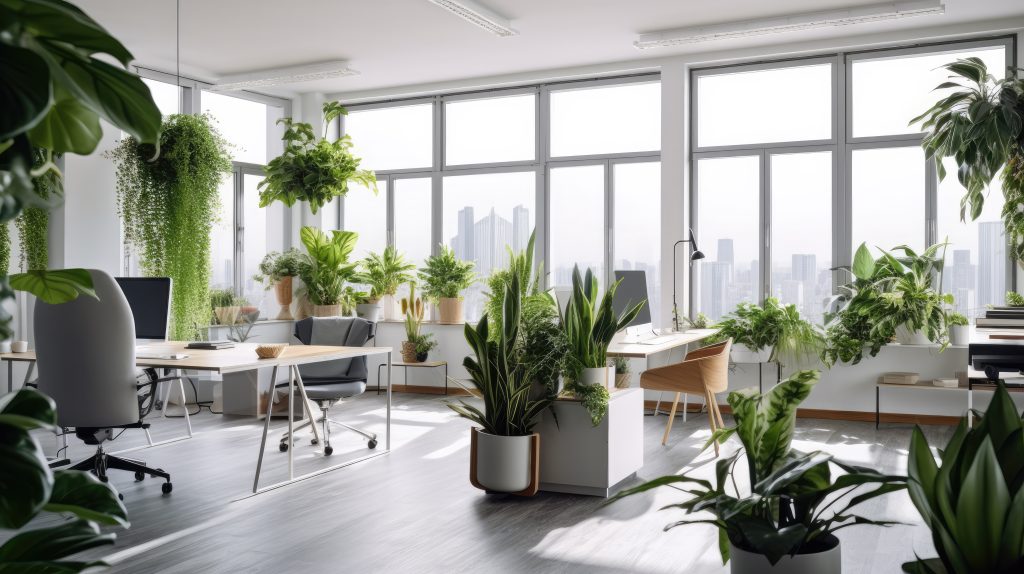
It’s easy to turn a dull office into a creative office space by incorporating a few plants, providing many benefits.
For example, plants act as natural air purifiers, filtering out indoor pollutants and reducing the presence of volatile organic compounds (VOCs). The improved air quality that plants provide creates a healthier environment for your employees, resulting in fewer sick days.
Additionally, indoor plants release oxygen through photosynthesis. This increase in oxygen within your workspace will enhance your team’s energy levels and concentration, boosting their productivity.
Start by selecting plants that are well-suited for indoor conditions and require minimal maintenance. These plants should be able to thrive in your workspace without demanding excessive attention or care from employees.
Strategically place the plants throughout your office, including any meeting rooms. Position them by workstations or even use them as dividers in breakout spaces to create more privacy for your employees when they have time away from their desks.
The presence of greenery in your office will add an aesthetic appeal, making the space visually pleasing for employees and visitors. Moreover, plants create a calming and stress-relieving environment.
Research suggests that interacting with nature indoors can lower stress levels and promote relaxation. This calming effect can increase employee productivity, creativity, and job satisfaction.
6.Rethink The Traditional Office
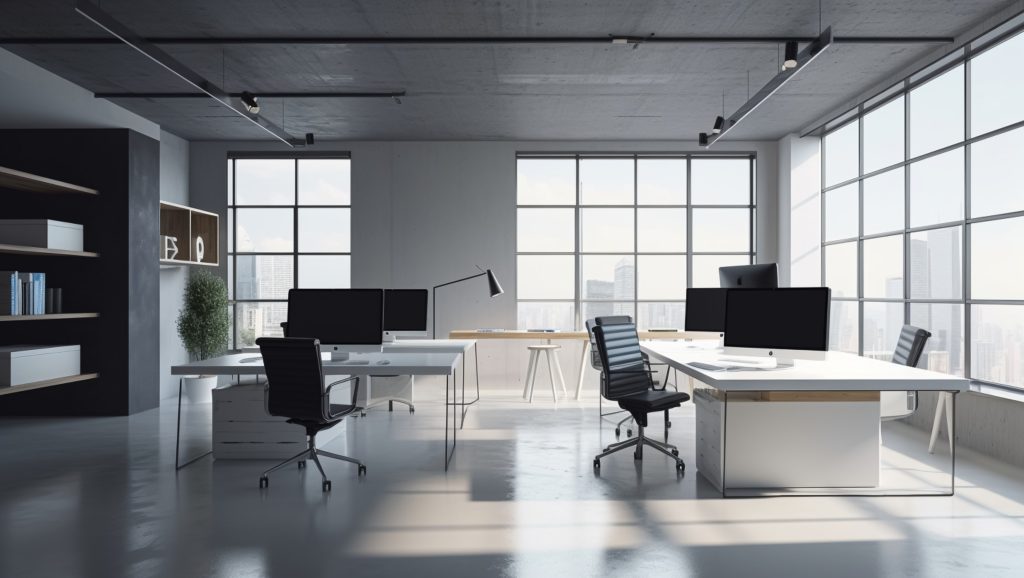
Rethinking the traditional office space can have a significant impact on making your office more eco-friendly. Here are some strategies to consider:
Flexible Work Arrangements: Implement flexible work arrangements such as telecommuting and remote work. This can reduce the need for employees to commute daily, thereby decreasing transportation-related carbon emissions.
Hot Desking and Shared Spaces: Opt for hot desking and shared workspaces. This reduces the need for excessive office space and furniture, leading to lower resource consumption and energy use.
Smart HVAC Systems: Install smart heating, ventilation, and air conditioning (HVAC) systems that can adapt to occupancy patterns and adjust temperature and airflow accordingly.
Renewable Energy Sources: If feasible, consider installing solar panels or other renewable energy sources to power the office. This can help reduce reliance on fossil fuels and decrease greenhouse gas emissions.
Smart Building Management Systems: Implement advanced building management systems that monitor and control energy use, lighting, temperature, and other factors in real time to optimize efficiency.
Modular Furniture and Layouts: Use modular furniture and adaptable layouts that can be easily reconfigured to accommodate changing needs. This reduces the need for new furniture and materials when making adjustments to the workspace.
Employee Awareness and Engagement: Educate employees about the eco-friendly initiatives and encourage their participation in energy-saving practices, such as turning off lights and equipment when not in use.
Eco-Friendly Commuting Options: Provide incentives for using eco-friendly commuting options such as biking, carpooling, or public transportation. Install bike racks and charging stations for electric vehicles if possible.
7. Adjust Lighting
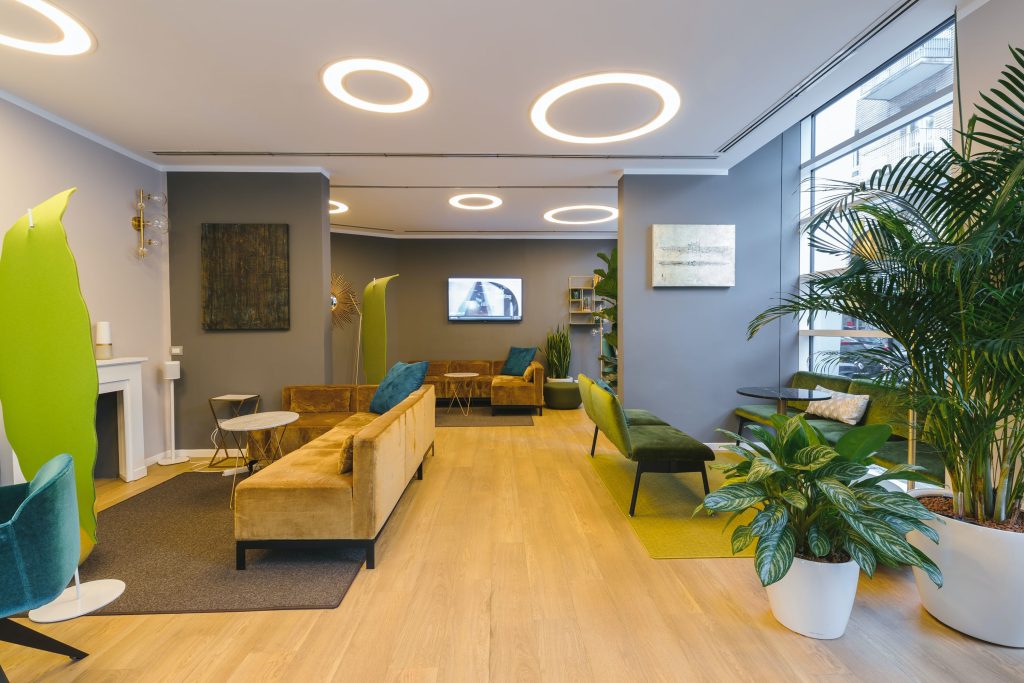
Install motion-activated lights in areas like hallways, restrooms, and conference rooms. These lights automatically turn on when motion is detected and turn off when the area is unoccupied.
By eliminating unnecessary lighting in unoccupied spaces, motion-activated lights significantly reduce energy consumption and lead to cost savings on electricity bills. They also extend the lifespan of light bulbs, reducing replacement and maintenance costs.
In addition to the financial benefits, motion-activated lights promote energy efficiency and sustainability by minimising energy waste. They improve convenience for employees, eliminating the need to control lights in common areas manually.
Implementing motion-activated lights in your eco-friendly office space will reinforce a culture of environmental responsibility within the workplace, reminding employees of the importance of conserving energy.
Now that you have read our tips and know how to create an eco-friendly office, you can take proactive steps to minimise your business’s carbon footprint. You will inspire your employees to embrace sustainability and showcase your environmentally-conscious values to clients.
If you need help creating a sustainable office that suits your business’s needs, Dthree can support you on your journey, from assisting you in building an eco-friendly office design brief to sourcing furniture.
For assistance finding your dream office space in London, contact DeVono.



